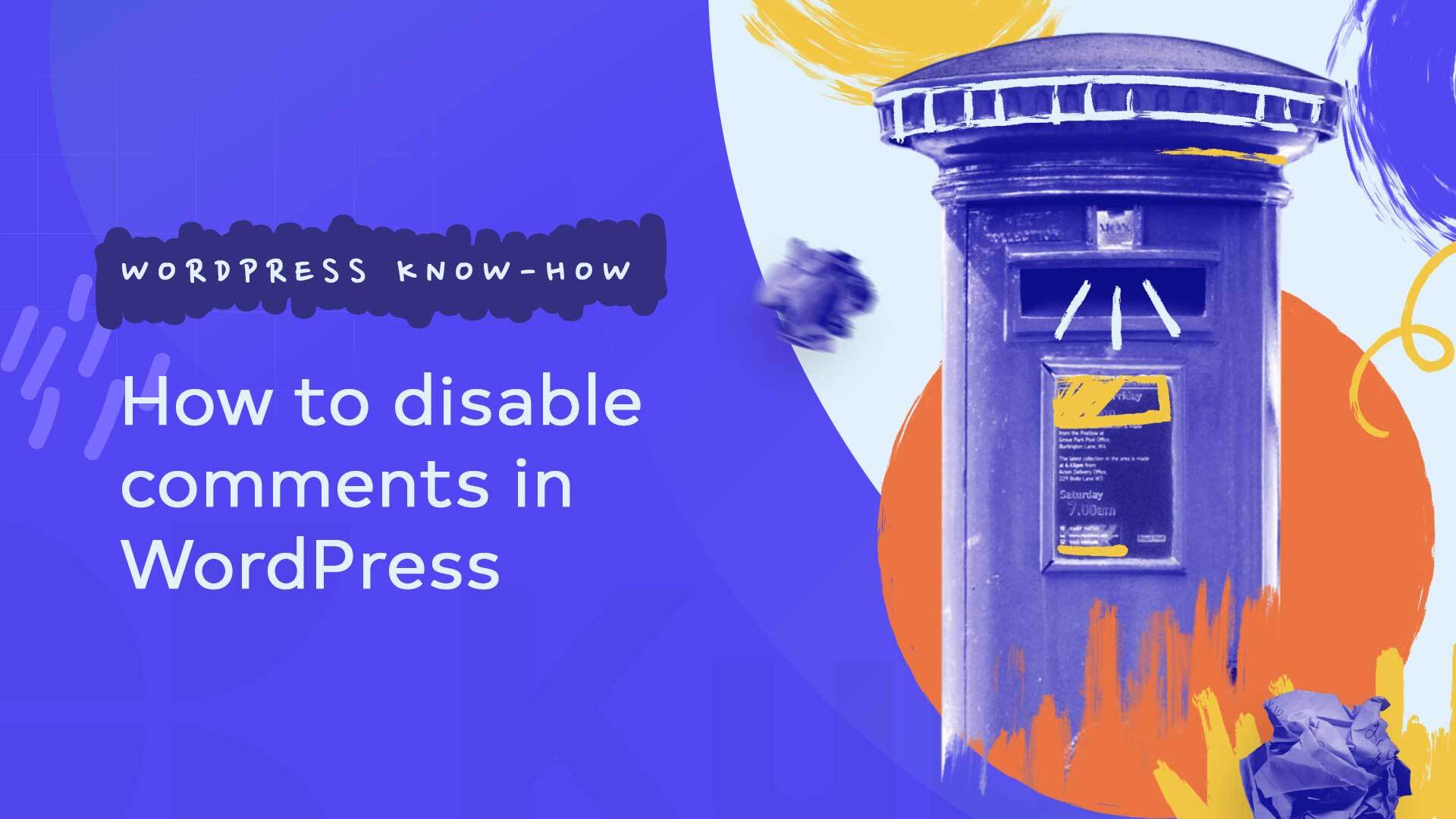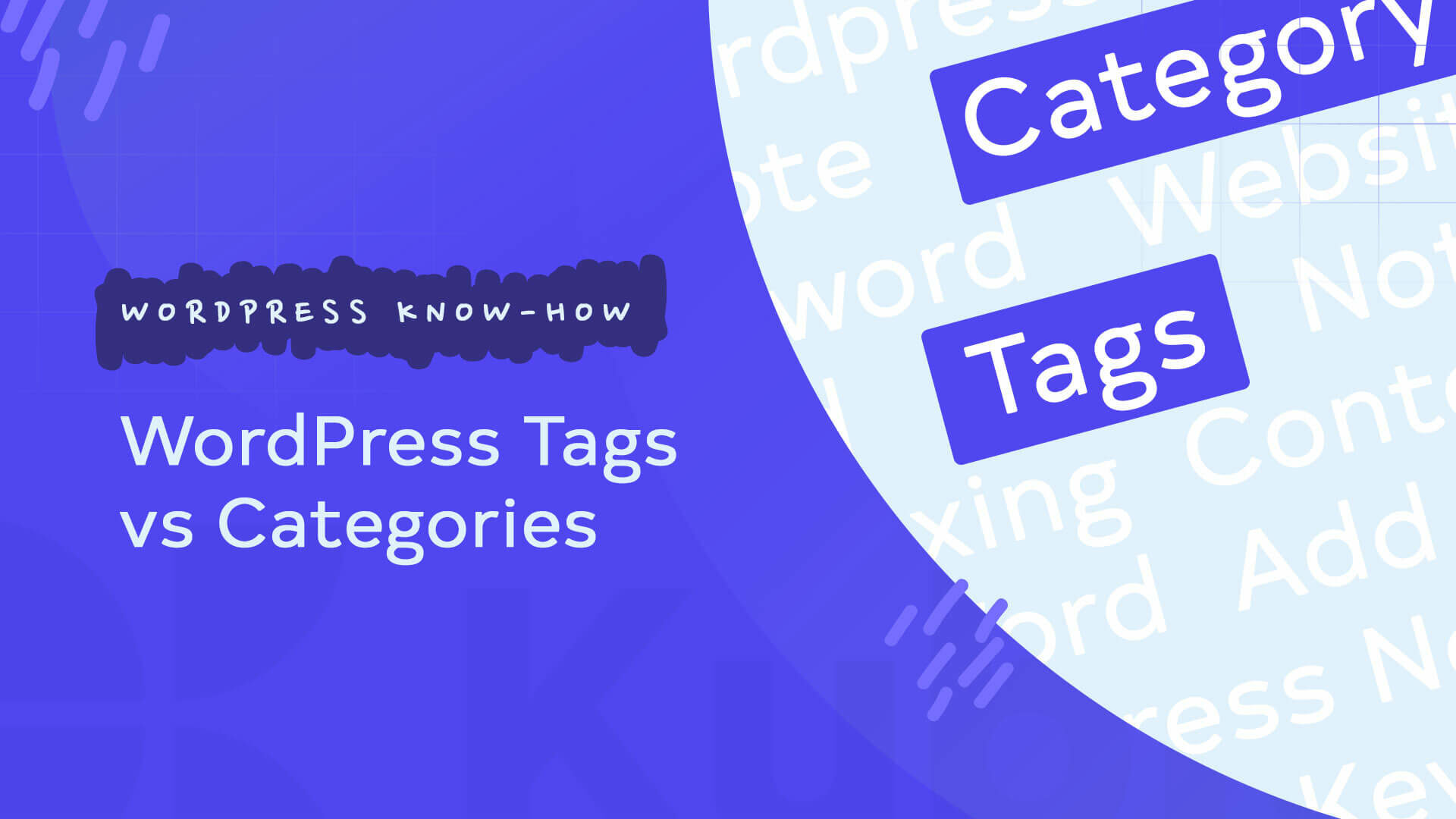WordPress started out as a blogging platform. The content management system (CMS) is now used by over 40% of websites. Therefore, some classic blogging functions such as the comment function have become obsolete over time.
That’s why there are many sites that want to disable comments in WordPress.
In this article, I’m going to show you the different options you have to disable WordPress comments. We’ll also discuss the benefits of allowing users to interact with your content.
Sometimes comments are an excellent way to engage with website visitors and create dialogue between you and them.
There are a lot of classic methods by which you can disable comments on your posts, depending on their type, but also permanently.
In this article, our editorial team proposes to show you step by step how you can disable comments on your WordPress website.
Here are some obvious reasons why some WordPress admins choose to give up comments for blog posts.
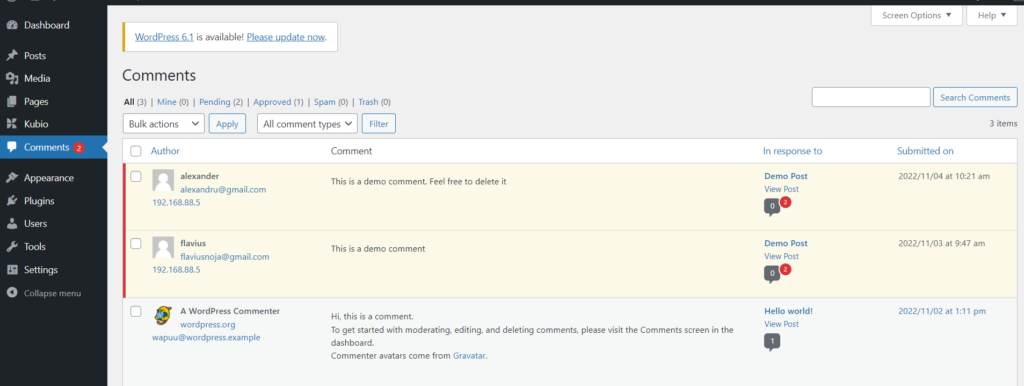
1. First of all, many comments on posts are spammy
As a general rule, spam refers strictly to that unwanted content that is mostly generated by robots. They randomly enter the sites / blogs made in WordPress and post dangerous content that has the intention of affecting the site. Besides that, from an SEO point of view, spam can have a negative impact on the site’s ranking.
Thus, in this context, spam comments are elements that WordPress site admins face on a daily basis. Besides that, sites with thousands, millions of visitors are the most attacked by spam comments.
2. Sometimes unmoderated comments can represent a high security risk
We already know that all spam comments or malicious links represent a serious threat when it comes to website security.
So as WordPress admins we have to protect our site as best as possible from any possible threat. In this way, we have to disable comments on WordPress posts.
3. Many large businesses with websites made in WordPress use social media for discussions with potential clients
Don’t get us wrong, disabling comments in WordPress does not mean that you isolate yourself from visitors. Maybe the big sites in your niche have forums, Discord channels, social media, etc. to create dialogue with customers/visitors.
Thus, it is imperative to disable comments in WordPress to avoid crowding.
But first we must know where we can see all the post comments in WordPress.
First of all we must login in the WordPress dashboard. After that we should go in the left side of the control panel and click comments.
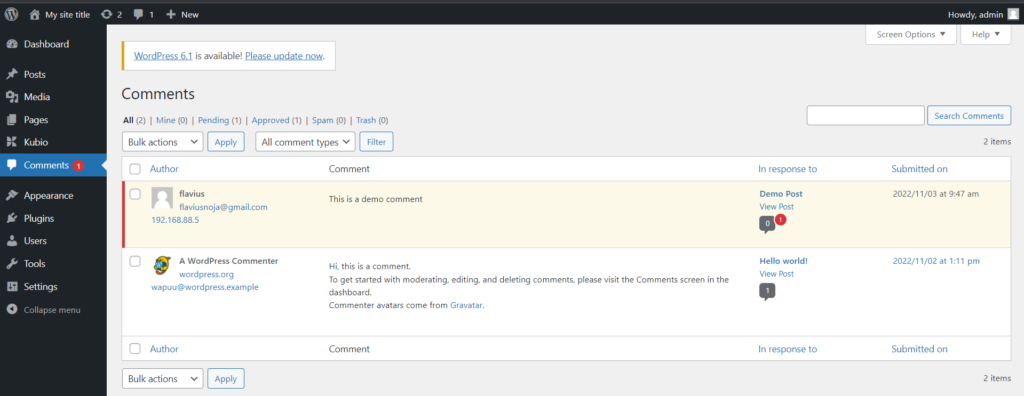
Here we can see the author of the comment, date posted and the post that recieved the comment.
Why do some users choose to disable comments in WordPress?
There are many reasons – for example -> well-known bloggers post articles that are announcing an event and they don’t want website visitors to comment on their post.
Besides this, many small and local businesses have websites made in WordPress and they do not put too much emphasis on the blog section, they have pages in the website component such as services, about us, contact and many other static pages. Thus, it makes no sense to allow comments.
2 ways to disable WordPress comments
There are several ways to disable WordPress comments. Here I would like to show you the two most important methods so that you can switch off the comment function in WordPress.
Disable WordPress comments directly in WordPress
Disable WordPress comments with plugin
This makes switching off the comment function child’s play. At the end of the article you will learn how to deactivate media comments and how to delete existing comments.
Disable WordPress comments directly in WordPress
The first port of call for disabling comments in WordPress is the settings of WordPress itself. You can find them on the Settings > Discussion page in your WordPress dashboard:
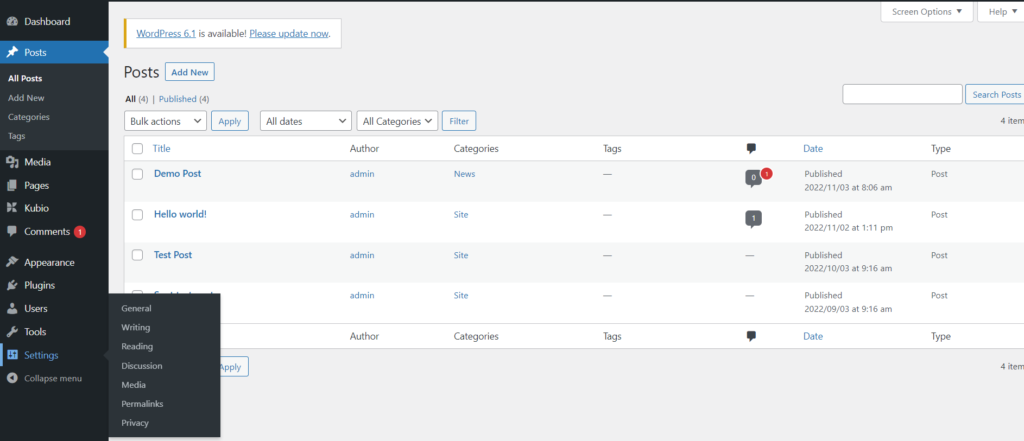
There are a variety of options here that can help you. If you are setting up your WordPress website for the first time, I recommend that you also check this setting.
The most important option to select here is Allow comments on new posts. If you disable this option, commenting will be turned off site-wide. If you’re working on a brand new website and don’t want comments, you’ve now turned off commenting. Bravo!

If you have an existing site, comments will only be disabled for future posts. Read on to learn how to delete comments that already exist on your Page.
Disable comments for individual posts
You can also deactivate the comment function for individual posts. There are several possibilities for this. The easiest is to access the block editor for a post.
Click on the post menu on the right and scroll down to the discussion settings (“discussion”). You can use the checkboxes here to disable comments for the post in WordPress:
If you don’t see this box, you’ll need to enable it in the settings, accessed from the menu in the top-right corner of the block editor:
This will open a dialog box, and if you bring up the Panels screen, you can toggle the Panels tab:
There are a few other ways to turn off comments for individual posts. When you go to the Posts > All Posts screen in WordPress, you can hover over a post and click the Quickedit dot to see a few options.
Here’s the Allow Comments checkbox:
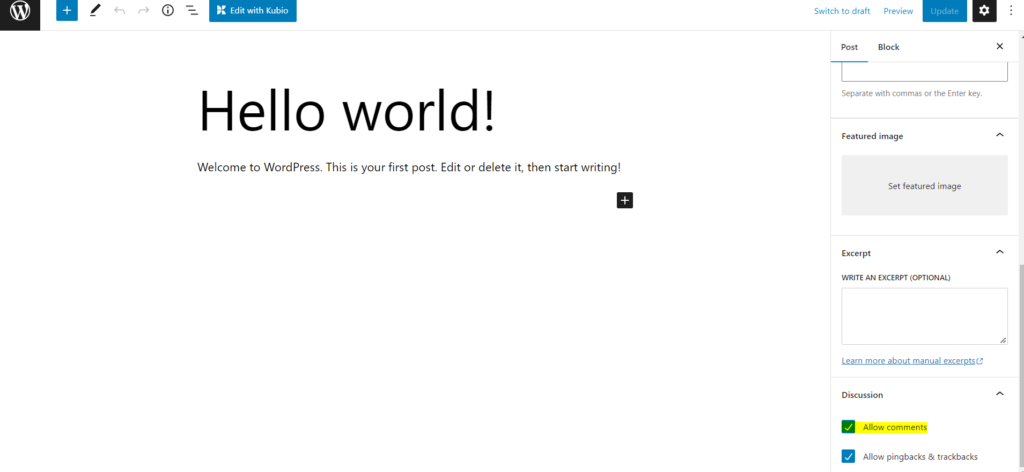
Clicking this option and saving your changes will prevent users from leaving comments on your posts.
Turn off the comment function for multiple posts
You can also turn off comments for multiple posts from the Posts > All Posts screen. First, select the posts you want to disable comments on, then click Edit from the Bulk Actions dropdown menu, then click Apply:

This will bring up a series of options, one of which you can use to disable comments:
Once you click the refresh button, comments will be disabled in WordPress for all selected posts.
Disable WordPress comments with plugin
You can also use plugins in WordPress – who would have thought!? There is a plugin for almost every need, and disabling comments is no exception.
Once you search the plugin library (“disable comments”) you will find some plugins that disable the WordPress commenting feature.
We find the Disable Comments plugin from WPDeveloper to be the best solution for disabling the comment function:
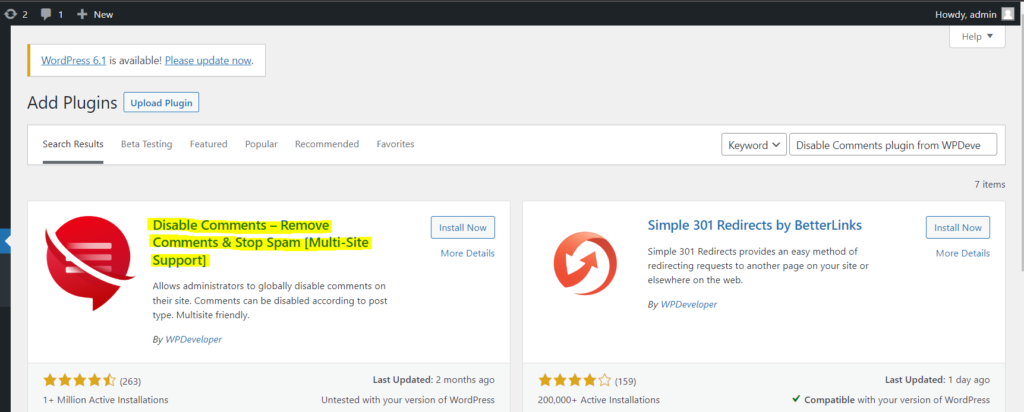
With over 1 million active installations, the plugin is widely distributed and well known.
Once you have installed and activated the plugin, you will find a menu under Settings > Disable Comments in WordPress:
The plugin allows you to do some basic tasks within WordPress, such as disabling comments across your site and for posts and/or pages.
You can also disable third-party comments in case they sneak into your posts.
There are also options to disable media comments and clear the entire comments database. You can also use these functions without a plugin. In the next section you will learn how to do this.
Disable comments on media
If you want to disable comments on media sites, there are two ways to do it.
You can either manually turn off comments for individual media attachments. To do this, you have to click through each file individually (in the media library and then for each image individually). With many files, this can quickly become very time-consuming.
The easier way to disable comments for all media attachments is a code snippet. Just add the following code to your child theme’s functions.php file:
function filter_media_comment_status( $open, $post_id ) {
$post = get_post( $post_id );
if( $post->post_type == ‘attachment’ ) {
return false;
}
return $open;
}
add_filter( ‘comments_open’, ‘filter_media_comment_status’, 10 , 2 );
If you’re using a plugin, you don’t need to use this code snippet.
Disable WordPress Comments Conclusion
We hope that this step-by-step guide to deactivating comments guide was useful for your WordPress journey. If you have any problems or comments, please leave a comment. And always remember: Comments can also be good! So think twice if you really want to disable them.
Feel free to check other articles on our blog. And also if you want to know what is the best social media plugin for your site, please check this article.


